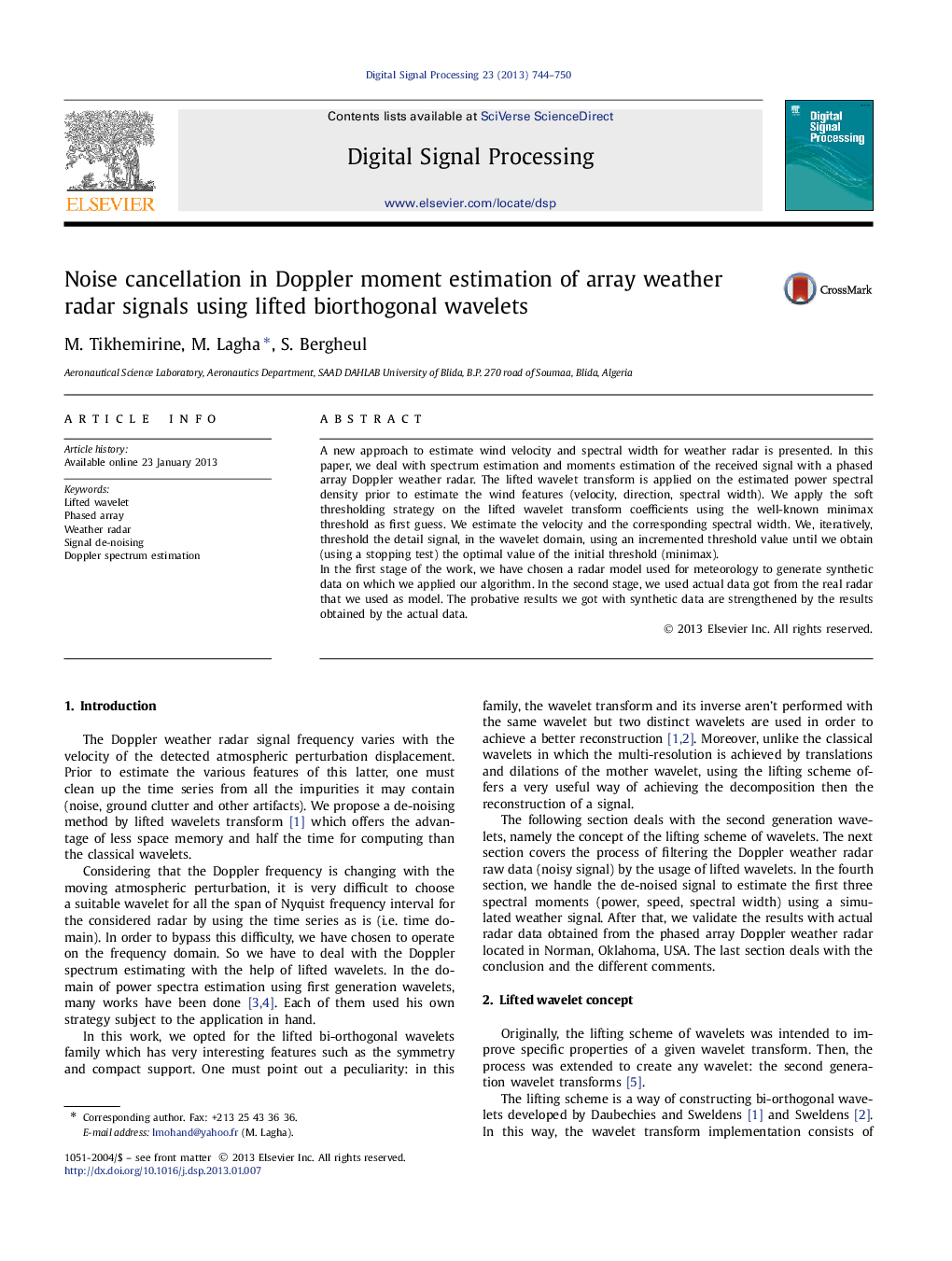| Article ID | Journal | Published Year | Pages | File Type |
|---|---|---|---|---|
| 559683 | Digital Signal Processing | 2013 | 7 Pages |
A new approach to estimate wind velocity and spectral width for weather radar is presented. In this paper, we deal with spectrum estimation and moments estimation of the received signal with a phased array Doppler weather radar. The lifted wavelet transform is applied on the estimated power spectral density prior to estimate the wind features (velocity, direction, spectral width). We apply the soft thresholding strategy on the lifted wavelet transform coefficients using the well-known minimax threshold as first guess. We estimate the velocity and the corresponding spectral width. We, iteratively, threshold the detail signal, in the wavelet domain, using an incremented threshold value until we obtain (using a stopping test) the optimal value of the initial threshold (minimax).In the first stage of the work, we have chosen a radar model used for meteorology to generate synthetic data on which we applied our algorithm. In the second stage, we used actual data got from the real radar that we used as model. The probative results we got with synthetic data are strengthened by the results obtained by the actual data.
Graphical abstract Forward lifted wavelet transform.Figure optionsDownload full-size imageDownload as PowerPoint slideHighlights► Reviews Doppler Weather Radar in the context of the wind detection and estimation. ► Discusses the Doppler spectrum estimation and spectral moment estimation of the received signals of the weather radar. ► Uses of the Lifted Wavelet to de-noise the received radar signal from the weather perturbations. ► Includes some commentaries about the obtained results.
